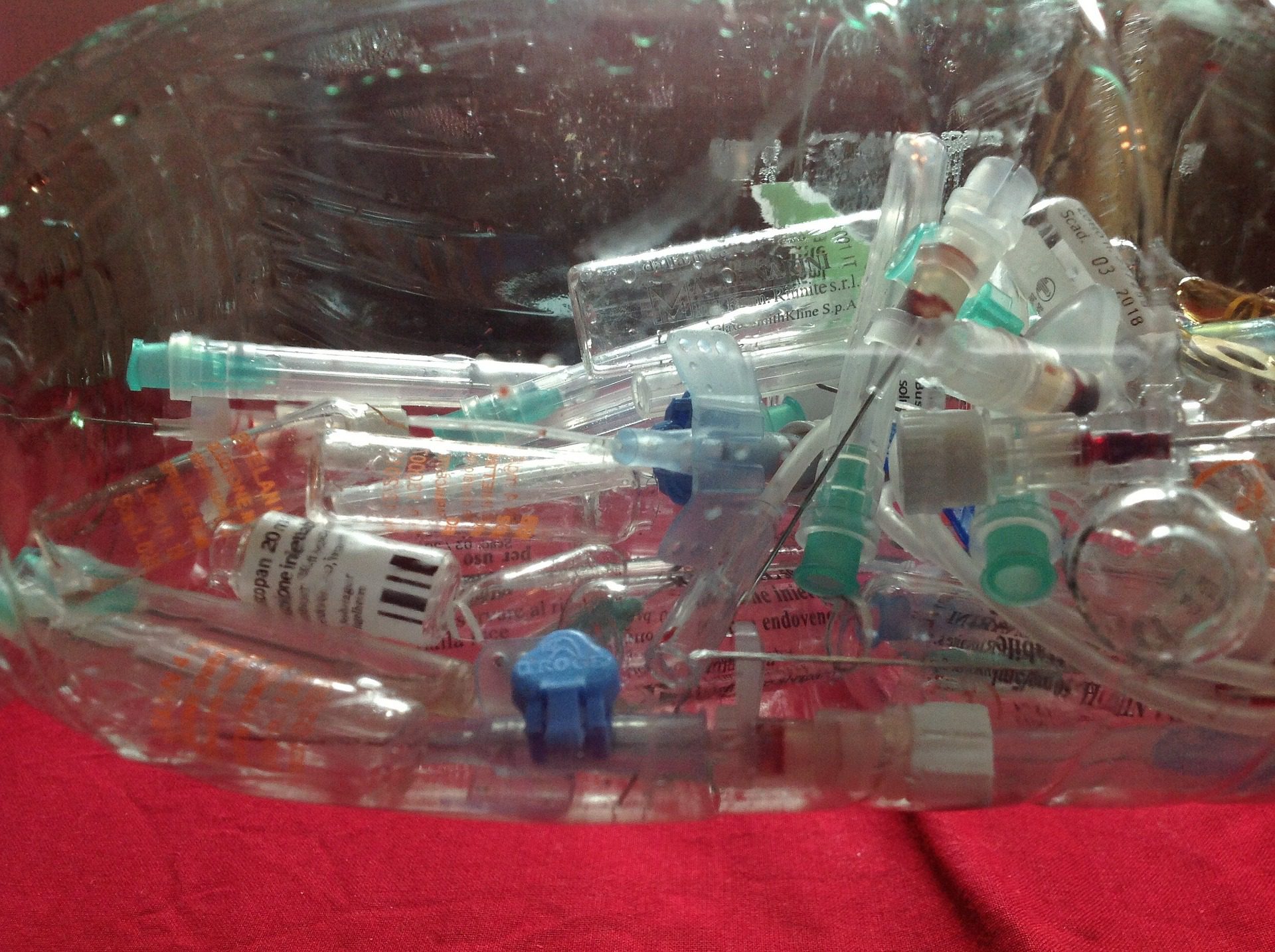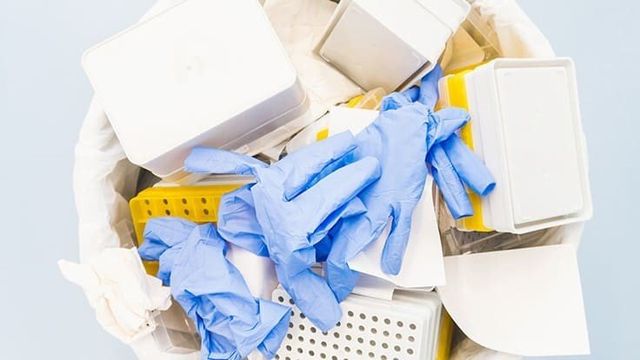Your Relied On Companion: Medical Waste Removal Services Tailored to Your Demands
Wiki Article
The Relevance of Proper Medical Waste Disposal: An Overview for Health Care Facilities
Appropriate clinical waste disposal is an important element of healthcare center management, making certain the security and wellness of people, staff, and the environment. From understanding the different groups of medical waste to complying with regulative needs, health care centers have to adopt reliable waste segregation practices and choose suitable disposal approaches.Recognizing Medical Waste Categories
Understanding clinical waste groups is vital for appropriate disposal in healthcare centers. Clinical waste is a wide term that includes different kinds of waste produced in medical care setups, such as clinics, healthcare facilities, and research laboratories. Categorizing medical waste assists make sure that it is managed, kept, and disposed of safely and based on relevant regulations.There are numerous categories of clinical waste that medical care centers require to be familiar with. These classifications include transmittable waste, sharps waste, pharmaceutical waste, chemical waste, and contaminated waste (medical waste disposal services with WasteX). Each category has specific characteristics and requires different disposal methods to reduce the risk of damage to health care workers, individuals, and the atmosphere
Transmittable waste, as an example, refers to squander infected with possibly infectious products, such as blood, body fluids, and cells. Sharps waste includes needles, syringes, and other sharp things that can create injury or transfer infections. Drug waste includes run out or unused medicines, while chemical waste contains dangerous chemicals utilized in medical treatments. Finally, radioactive waste consists of materials infected with radioactive compounds, such as nuclear medicine products.
Conformity With Regulatory Requirements
Health care centers must guarantee conformity with governing needs for correct medical waste disposal. Regulatory bodies, such as the Epa (EPA) and the Occupational Security and Wellness Administration (OSHA), have developed policies and standards to secure public wellness and the setting. These guidelines lay out the correct handling, storage space, transport, and disposal of medical waste.Compliance with governing needs is essential for health care centers to avoid legal charges, reputational damage, and possible damage to human health and the setting. Failing to conform with these guidelines can cause fines, suits, and also the suspension or cancellation of operating licenses.
To guarantee conformity, medical care facilities need to establish detailed waste administration programs that include personnel training, proper waste segregation, and using proper containers and labels. Regular audits and inspections ought to likewise be conducted to recognize any type of non-compliance concerns and address them promptly.
It is vital for healthcare facilities to keep up to day with adjustments in policies and update their waste monitoring practices accordingly. This can be achieved by proactively checking updates from governing bodies and joining training programs and workshops.
Executing Effective Waste Partition Practices
To make sure proper clinical waste disposal, healthcare facilities have to implement reliable waste partition practices. Waste partition is an important action in the overall waste management procedure, as it aids minimize the danger of infection, protects against cross-contamination, and makes sure the risk-free disposal of various sorts of waste. Efficient waste segregation methods include dividing clinical waste right into various classifications based on its characteristics and potential dangers.One typical method is the partition of sharps waste, such as needles and scalpels, from various other sorts of medical waste. Sharps waste need to be placed in puncture-resistant containers to stop injuries and prospective infections. Furthermore, contaminated materials, such as pharmaceuticals and chemicals, need to be separated from basic medical waste to stop ecological contamination.
Proper labeling and color-coding of waste containers are crucial for effective waste segregation. Noticeable and clear tags should be positioned on each container to show the sort of waste it has and any kind of special delivery requirements - medical waste disposal services with WasteX. Furthermore, color-coding can be made use of to separate between different waste groups, making it less complicated for medical care staff to get rid of and identify of waste appropriately
Regular training and education for medical care personnel is critical for the successful application of waste segregation practices. Personnel ought to be educated on the various waste classifications, proper partition techniques, and the value of following waste management procedures. This will certainly assist make sure compliance and uniformity in waste partition techniques throughout the center.
Deciding On Appropriate Disposal Techniques
Proper choice of appropriate disposal approaches is essential in making sure the environmentally accountable and safe management of medical waste in medical care centers. Medical care facilities produce a range of medical waste, consisting of sharps, contagious waste, pharmaceutical waste, and chemical waste - medical waste removal services. Each sort of waste requires particular disposal methods to lessen the risk of contamination, injury, and environmental harmOne usual disposal method for medical waste is incineration. Incineration includes the regulated burning of waste at high temperatures.

Chemical sanitation is an additional approach made use of for sure sorts of medical waste, such as pharmaceutical waste. This approach utilizes chemicals to neutralize or damage pollutants. It is important to select chemicals that are safe and environmentally pleasant.
In some instances, land fill disposal may appropriate for non-hazardous clinical waste (medical waste disposal services with WasteX). Proper segregation and packaging are vital to avoid leakage or contamination.
Ultimately, healthcare centers should meticulously examine the qualities of their medical waste and select ideal disposal approaches that prioritize safety and security, environmental security, and regulative compliance. Routine training and tracking are necessary to make certain that health care staff follows appropriate disposal procedures.

Training and Educating Staff on Correct Disposal Procedures
Staff education and learning and training play a crucial role in guaranteeing the appropriate disposal of clinical waste in healthcare centers. It is vital that all personnel, consisting of physicians, registered nurses, service technicians, and support team, get extensive training on correct disposal procedures. This training needs to cover the different kinds of medical waste, their possible hazards, and the suitable approaches for managing, segregating, and getting rid of them.Among the primary goals of team education and training is to ensure that all health care specialists comprehend the significance of proper disposal procedures and the possible effects of inappropriate waste management. They anonymous require to be mindful of the risks related to medical waste, such as the transmission of infections and the contamination of the atmosphere. medical waste removal services. By recognizing these dangers, employee will certainly be more determined to adhere to proper disposal protocols and take the needed precautions to safeguard themselves, their associates, and the area
Educating ought to likewise cover making use of personal protective equipment (PPE) and the proper methods for handling medical waste. Team member must be enlightened on how to recognize and set apart different sorts of waste, such as sharps, contagious waste, and dangerous chemicals. They ought to likewise be trained on the appropriate usage of waste containers, such as sharps containers and biohazard bags, along with the relevance of labeling and securing these containers properly.
In addition, team education and learning and training must include routine updates and correspondence course to make certain that health care professionals stay informed concerning the view website most recent policies and best techniques in clinical garbage disposal. This continuous education is essential to maintain a high level of awareness and conformity among personnel.
Conclusion
In verdict, appropriate medical garbage disposal is of utmost relevance for health care facilities. Recognizing the different categories of clinical waste and abiding by governing requirements makes sure the safety and wellness of both health care workers and the basic public. Executing reliable waste segregation practices and picking suitable disposal methods are critical in protecting against the spread of infectious illness and safeguarding the setting. Finally, training and enlightening staff on correct disposal procedures is essential for preserving a tidy and safe health care facility.From comprehending the different classifications of clinical waste to complying with governing requirements, medical care facilities should adopt efficient waste partition practices and pick suitable disposal approaches. These categories consist of infectious waste, sharps waste, pharmaceutical waste, chemical waste, and contaminated waste.To make certain proper medical waste disposal, medical care facilities need to apply effective waste segregation techniques. Waste segregation is an important action in the content overall waste administration procedure, as it helps minimize the threat of infection, prevents cross-contamination, and guarantees the risk-free disposal of various types of waste. Health care centers create a selection of clinical waste, consisting of sharps, transmittable waste, pharmaceutical waste, and chemical waste.
Report this wiki page